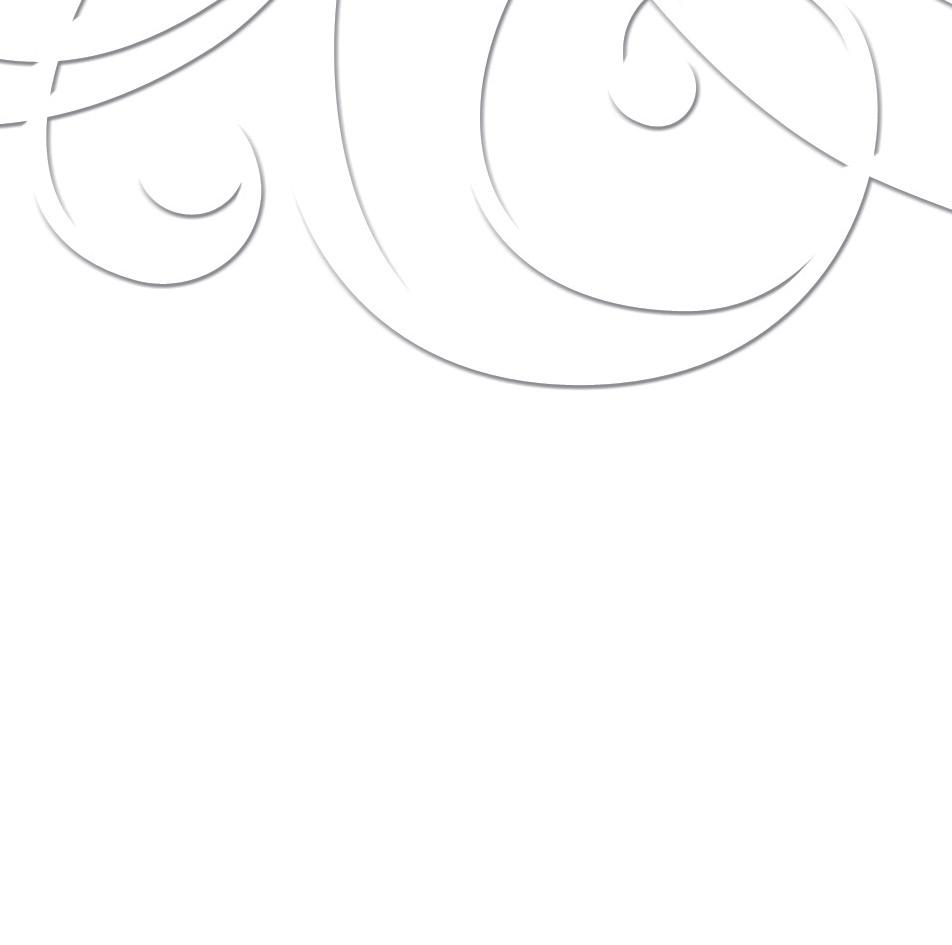MATRE
“...yet from those fl ames no light...”
for Solo Harp and Orchestra
Score







“...yet

“...yet from those fl ames no light...”
Score







“...yet
(2015) for Solo Harp and Orchestra
Harp solo
String group surrounding soloist on stage
Left side:
Cello 1 (one player)
Cello 2 (one player)
Cello 3 (one player)
Double Bass 1 (one player) – 5 strings, the lowest tuned down to B b
Double Bass 2 (one player) – 5 strings, the lowest tuned down to B b
Right side:
Cello 4 (one player)
Cello 5 (one player)
Cello 6 (one player)
Double Bass 3 (one player) – 5 strings, the lowest tuned down to B b
Double Bass 4 (one player) – 5 strings, the lowest tuned down to B b
Three groups on stage (left/right/middle)
Left side of stage:
Flute 1
Clarinet in B b 1
Trumpet in C 1
Percussion 1 (Gran cassa and Harmonica in F)
Middle of stage (behind soloist):
Flute 2
Clarinet in B b 2
Trumpet in C 2
Percussion 2 (Gran cassa and Harmonica in D)
Right side of stage:
Flute 3
Clarinet in B b 3
Trumpet in C 3
Percussion 3 (Gran cassa and Harmonica in B b)
Offstage
Horn in F 1
Horn in F 2
Horn in F 3
Horn in F 4
Tuba
Tenor Trombone 1
Tenor Trombone 2
Bass Trombone
Timpani
Violin I
Violin II
Viola
Violin II
Conductor (offstage)
Winds/Percussion - Group 2
Flute 2
Clarinet in B b 2
Trumpet in C 2
Percussion 2
Winds/Percussion - Group 1
Flute 1
Clarinet in B b 1
Trumpet in C 1
Percussion 1
4
Winds/Percussion - Group 3
Flute 3
Clarinet in B b 3
Trumpet in C 3
Percussion 3
Quarter tone sharp/flat
Three-quarter tone sharp/flat
1/6-tone flat (7th harmonic)
The lowest string should be tuned down to B b, the second lowest string should be tuned to D n. In flat position, the lowest A b should be tuned down a 1/6-tone, to allude the 7th harmonic of an extremely low B b (two octaves below the lowest B b-string).

The rest of the strings should be tuned in all octaves as follows (middle position),

thus producing the following possible pitches (flat/middle/sharp position):

A forceful glissando between the specified pitches. Let the strings rattle against each other to create a buzzing sound.
The offstage instruments should be conducted by the conductor, also positioned offstage. A monitor (sound only) could be used to make sure the conductor hears the soloist.
Exact coordination between onstage and offstage instruments are in most cases of no importance. In some parts, for instance D2-F2, it is important that the onstage and offstage instruments do not listen to each other, but rather play as if the other group did not play at all.
The offstage instrument parts do not contain information about the solo part. Where no offstage instruments play, the parts are reduced to paused fermatas. For instance are the beginning to A1 represented by a paused fermata.
The same is valid for onstage wind/percussion parts. In addition to the individual parts, it exists a score for each group, containing the solo part. One player (or more) in each group should read from this score, and give cues to the other musicians in the group.
Double Bass 1 and 3 should be considered as group leaders, leading left and right side of the onstage strings (Cellos/Double Basses). Both parts contain the solo part.
Commissioned by Bergen Philharmonic Orchestra
“...yet from those flames no light...”
(2015)
Ørjan Matre (b. 1979)
Onstage strings: Domino-effect Cello 3 and 6, positioned closest to the harp, play their B b right after the soloist. The rest of the strings follow one by one (as fast as possible), ending with Double Bass 1 and 3.
Onstage strings: Stop exactly when soloist damps harp.
strings: Domino-effect)
Page intentionally left blank
Roman numbers (I-V) do only appear in the offstage parts, and do not necessarily correspond with the numbers E1-E5 printed in the onstage parts.
Onstage instruments (see p. 19)
Offstage strings play E1-5 (page 18 and 20) totally indenpent from onstage performers (page 19 and 21). Offstage strings will finish page 20 approximately when onstage instruments reach page 22/23.
E1-E5: Domino effect. Start each measure as before, one by one starting from Cello 3/6 to Double Bass 1/3. Play until paused fermata (with no coordination between the parts) and wait for next harp glissando.
Onstage
Onstage
q = 72)
Individual repeats. Do not coordinate with any other part, vary duration on each repeat.
strings (see p. 20))
(Offstage strings (see p. 20))
Offstage strings will finish their p. 20 on p. 22/23. If they have not finished when soloist reaches F1, the soloist should repeat F1 until offstage strings have finished playing p. 20.
rit. accel.
Page intentionally left blank
Winds/Percussion: Start approximately when soloist reaches H1, repeat the phrase totally independent from the other players.
(Change dynamics for each of the four repeats.)
(Change dynamics for each of the four repeats.)
(Change dynamics for each of the four
(all notes: 1st and 2nd valve)
(Change dynamics for each of the four repeats.)
(all notes: 1st, 2nd and 3rd valve)
(Change dynamics for each of the four repeats.)
(Change dynamics for each of the four repeats.)
Please note: Page 30 (Soloist/Onstage strings), page 31 (Winds/Percussion) and page 32 (Offstage instruments) are played simultaneously without any coordintation.
(Onstage strings/winds (see p. 30/31))
(Onstage strings/winds (see p. 30/31))
Depending on individually chosen durations, onstage strings/winds
I1-I3: The exact coordination between onstage group and offstage group is of no importance. The soloist places his/her motifs freely in-between the chorale phrases.
Wait for the 2nd chorale phrase to be played offstage (Horns/Tuba).
Wait for the 3rd chorale phrase to be played offstage (Horns/Tuba).
glissando (ca. 18'')
slow glissando (ca. 15'')
slow glissando (ca. 18'') extremely slow glissando (ca. 24'')
slow glissando (ca. 12'')
slow glissando (ca.
(hardly audible) Ø (hardly audible) Ø (hardly audible)
(hardly audible)
(hardly audible)
(hardly audible)
(hardly audible)
(hardly audible)
Individual repeats. Do not coordinate with any other part, vary duration on each repeat.
Individual repeats. Do not coordinate with any other part, vary duration on each repeat.
Individual repeats. Do not coordinate with any other part, vary duration on each repeat.
Exact coordination between onstage and offstage instruments is not necessary.
Onstage strings: Domino-effect
(Onstage strings: Domino-effect)
Onstage strings enter as soon as they hear the chord played by offstage horns (stopped).

For more than 200 years, Edition Peters has been synonymous with excellence in classical music publishing. Established in 1800 with the keyboard works of J. S. Bach, by 1802 the company had acquired Beethoven’s First Symphony. In the years following, an active publishing policy enabled the company to expand its catalogue with new works by composers such as Brahms, Grieg and Liszt, followed in the 20th century by Richard Strauss, Arnold Schoenberg and John Cage.
Today, with its offices in Leipzig, London and New York publishing the work of living composers from around the world, Edition Peters maintains its role as a champion of new music. At the same time, the company’s historic and educational catalogues continue to be developed with award-winning critical and pedagogical editions.
Seit über 200 Jahren steht die Edition Peters für höchste Qualität im Bereich klassischer Notenausgaben. Gegründet im Jahr 1800, begann der Verlag seine Tätigkeit mit der Herausgabe von Bachs Musik für Tasteninstrumente. Schon 1802 kamen die Rechte an Beethovens erster Sinfonie hinzu. In der Folgezeit wuchs der Katalog um neue Werke von Komponisten wie Brahms, Grieg und Liszt sowie – im 20. Jahrhundert – Richard Strauss, Arnold Schönberg und John Cage.
Als Verleger zahlreicher zeitgenössischer Komponisten aus aller Welt ist die Edition Peters mit ihren Standorten Leipzig, London und New York auch weiterhin Anwalt neuer Musik. Zugleich wird das Verlagsprogramm im klassischen wie im pädagogischen Bereich kontinuierlich durch vielfach preisgekrönte Ausgaben erweitert.